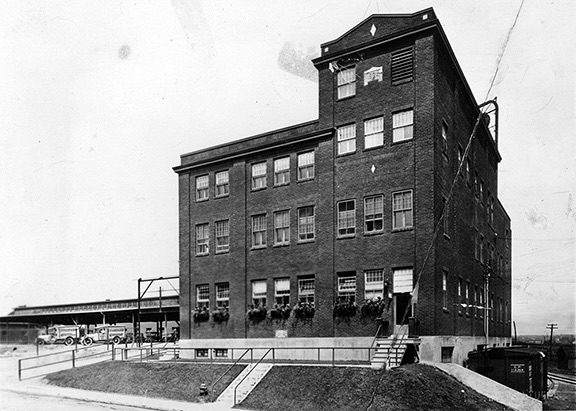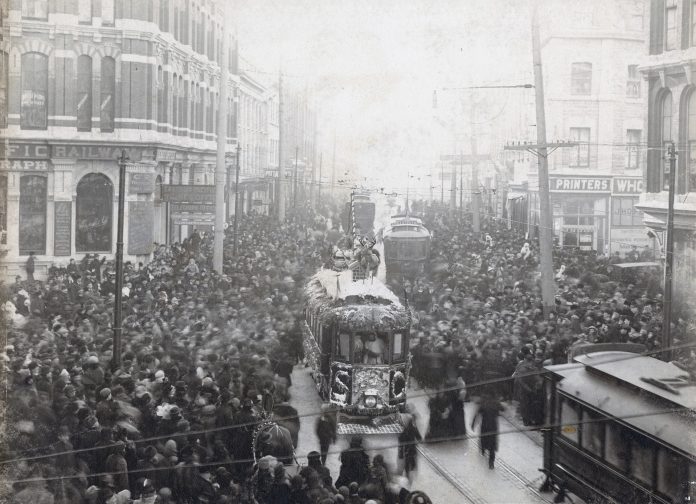Christmas 1924. A century ago, the citizens of our neighbourhood were filled with hope and optimism, experiencing a prosperity that perhaps has never been equalled. It was a happy time, where rapid social change began affecting even the holiday of Christmas.
The “Roaring Twenties” were in full swing, and life in Canada had never been better. Advances in industry and technology had changed our city immeasurably over the previous 25 years. No generation had yet experienced such evolution. Following the Allied victory in WWI, it was a time of jubilation, but also where standard methods of celebrating Christmas with family and Church intersected with the quickly-growing commercialization of the holiday.
In Kitchissippi alone, 1924 had been a year of tremendous progress, with new construction occurring on every street. New businesses, new industry, new educational facilities, a huge new modern hospital, and limitless opportunity made it a great place to grow a family. A look at Christmas 1924 is a perfect snapshot of time in Kitchissippi in a period of change and development.
But Christmas 1924 almost began in tragedy
The rails were heavy with traffic the morning of Dec. 24 as Canadians moved across the country, anxious to visit home and family for the holiday. One mile west of Woodlawn, a broken rail derailed the CNR No. 1 passenger train westbound from Montreal to Vancouver. The engine and seven cars jumped the track, injuring the engineer and fireman, but thankfully no travelers. The passengers, who had gone through Kitchissippi on their way west just before 2 a.m., were returned to Bayview on a special train, and re-dispatched later that afternoon.
Meanwhile, the neighbourhood was bustling with activity, with residents shopping for last minute gifts. Commercialization was strong post-WWI and every store from Hintonburg through to Westboro was promoting food and gifts to make a Merry Christmas.
“Early in the afternoon, the snow-carpeted streets of Ottawa, brilliantly lighted, are an appealing picture. The shop windows glow more brilliantly as night sets in. Wonderful displays of colour, novelty and abundance lure the shoppers in streams through revolving and swinging doors,” wrote The Citizen at the time. ”It requires no effort to attend the feast of bargains over the shop counter, even though the parcels have to be carried home in proletarian fashion on the street cars. For milady in the comfortably warmed limousine, flitting around in the blaze of brightness is just a pleasant butterfly excursion.”
A popular shopping spot within the new neighbourhood of Wellington Village was E.S. Howards grocery store at 1379 Wellington (now Café Mio), who promised “the finest foodstuffs available.”
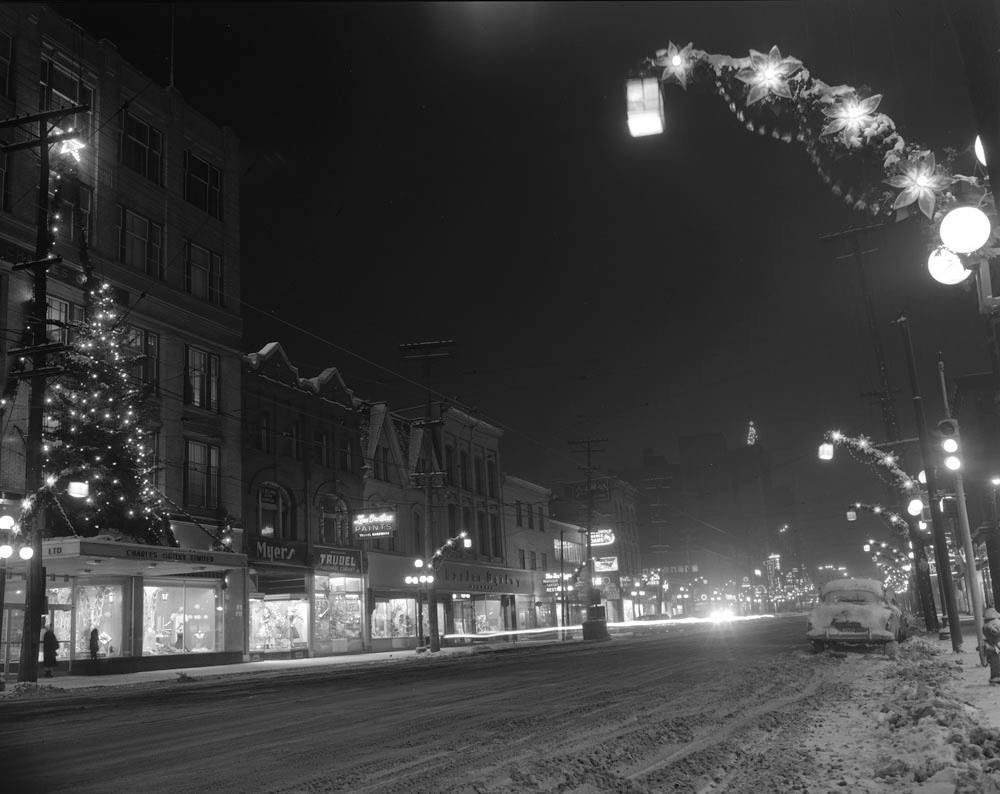
Christmas 1924 was an especially relaxed time as the City of Ottawa had decided to move back the annual municipal elections to early December, rather than after New Year’s, a change which would stick. Political volunteers, many of whom also volunteered for charitable organizations, found “comparative tranquility” in being able to focus on the Christmas season rather than being in the peak of an election campaign.
A time for helping others
Charities were hard at work on Christmas Eve to ensure that the less fortunate residents of Ottawa still had a memorable Christmas. The Ottawa Welfare Bureau ran a Christmas Exchange that helped coordinate approximately 50 relief organizations to provide Christmas cheer to 675 needy Ottawa families. These baskets contained roast beef, potatoes, fruit, candies, plum pudding, rolled oats, canned milk, tea, butter, bread, rice, candies, toys, and “in some cases boots, stockings and other clothes, which had on investigation, been found to be necessary” in a highly-organized operation.
The Ottawa Boy Scouts began a tradition in 1924 of collecting used toys before Christmas, repairing them, and helping deliver them to between 350-400 children whose parents could not afford toys.
The Highland Park Baptist Church on Kenwood Avenue in Westboro hosted a Christmas concert, led by the Sunday School.
“An excellent program was put on by members of the school, all departments from the primary to the senior classes taking part,” noted The Citizen. There were recitations, singers, dialogs, and musical numbers, and a sermon from Rev. A.N. Frith, pastor of the church. During the evening, a generous collection was received towards the carrying out of relief work in Central Europe.
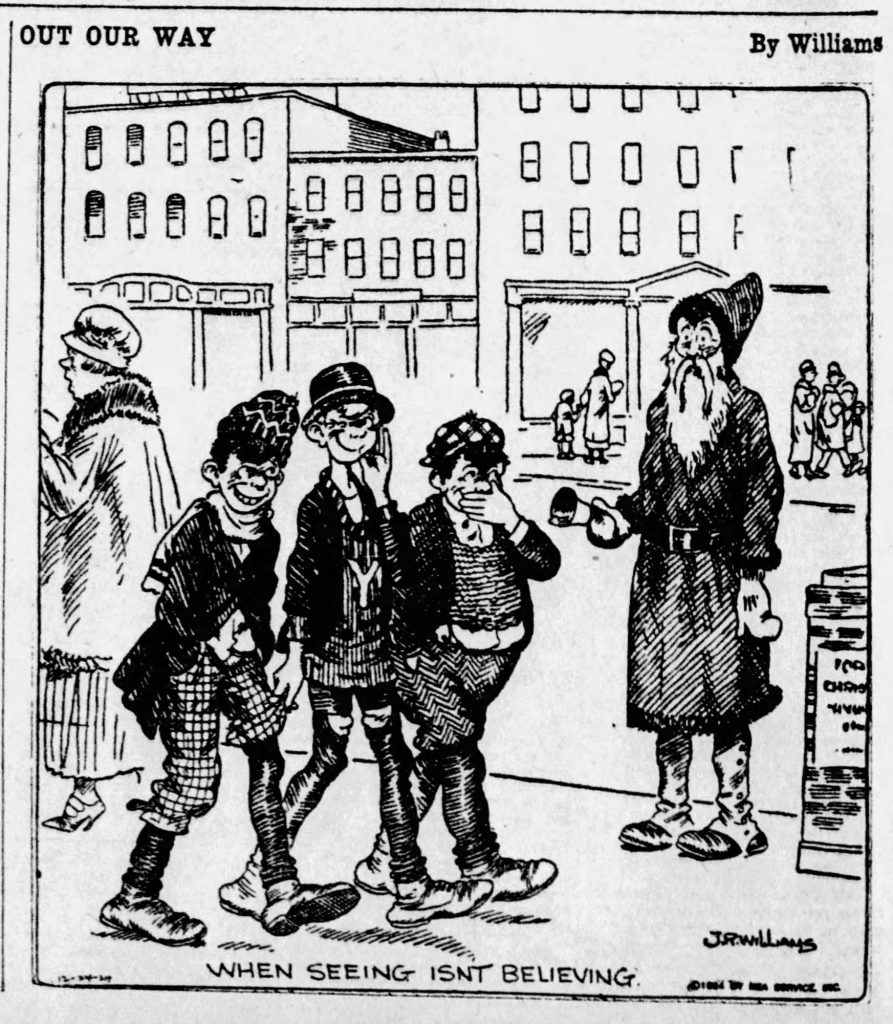
The first Christmas in the new St. George’s Church on Piccadilly was filled to capacity at midnight mass, delivered by Rev. Father G. Prudhomme.
“The choir, under the direction of Mr. Sidney Clemens, gave a very effective rendering of Wiegand’s Mass of the Immaculate Conception,” reported The Citizen. “Adeste Fideles” and “O, Holy Night” were also sung, with accompaniment by Herbert J. Mayotte on the organ.
Traffic on the streetcars across Ottawa was reported to have been especially heavy on Christmas Eve, and while the Ottawa Electric Railway had extended service until 2 a.m. Christmas morning to accommodate churchgoers and other revelers, generous conductors kept the trains running on their own time until after 4 a.m.
When Christmas morning dawned over Ottawa and Kitchissippi, it was a quiet morning. “The weather was brisk and exhilarating for those who wandered from the fireside, the thermometer registering 10 to 11 degrees above zero most of the day,” reported The Citizen.
A busy time for mail service
Tradition of the era was to send Christmas cards and gifts to be received on Christmas Day itself. In Ottawa, the Post Office had extra hands on deck, and borrowed seven public schools across the city as distribution centres. While 100,000 pieces had come in for delivery prior to Dec. 25, on Christmas Eve alone, 260,000 pieces of mail for local and outside delivery were handled by the Post Office in Ottawa. The Post Office was proud to boast that “not a solitary piece of mail or a parcel of any kind laid in the Post Office over Christmas Day,” the mail carriers having successfully delivered all the mail and parcels Christmas afternoon. Incredible.
The Civic Hospital, which had only opened less than a month earlier, celebrated its first Christmas with 100 patients. The highlight for them was the presentation of a radio concert thanks to the CNR “which sent out a receiving set and inside aerial,” so that it could be received and heard in the hospital.
“The occupied wards were gaily decorated with Christmas favours, holly and laurel predominating, and the May Court Club…provided a Christmas tree for the little children, each being presented with a gift together with fruit and candies,” reported The Citizen. The Carleton County Protestant Hospital Auxiliary also delivered a gift to each adult patient. It was also noted that there was just one birth in the hospital on Christmas Day. “One little baby boy saw the light of the world in the institution on Christmas Day. He is the son of Mr. and Mrs. C. H. Billings, 270 Albert Street.”

Meanwhile, at the County jail on Nicholas Street, the 22 male and three female prisoners were extremely well taken care of. They were given a Christmas dinner consisting of Irish stew, pie, bread and butter, tea, fruit, nuts and candy. “The prisoners were also given the opportunity of having a smoke for a short time.” The band of the Salvation Army visited the jail and played Christmas music in the yard and left behind fruit, nuts and candies which were distributed at noon hour, while the YMCA delivered pies to the prisoners.
Prisoners had just completed a project breaking up over 400 tons of stone in the jail yard, which would be used on township roads. Soon Nepean Council would use some of this stone to gravel Clare Street, Shillington Avenue, Boyd Avenue, Fraser Avenue and others.
Activities for all age groups
For the unincarcerated, Christmas Day 1924 offered a plethora of activities for families. Movie theatres were open, with the latest Buster Keaton a popular draw, as were an early form of 3D movies called “Plastigrams,” described as “movies that step off the screen and approach you so realistically you want to dodge them.”
The Auditorium on Argyle Street hosted open skating in the afternoon and evening, with “perfect artificial ice promised.” They also put on a special show with the “Alumno Skaters” featuring world barrel-jumping record holder Karl Milne of Plattsburgh, NY and his “celebrated blackface comedian pal” Bill Small.
Meanwhile in Kitchissippi, where progress and prosperity had been in full bloom in 1924, pleasure drivers were likely out enjoying a scenic drive on the one-year-old Island Park Drive, or driving past all of the neighbourhood’s new builds from 1924 like the Standard Bread Company building on Gladstone, the Salvation Army “Rescue Home” for unwed mothers on Wellington, the Masonic Temple in Westboro, and the Electric Railway substation on Holland Avenue.
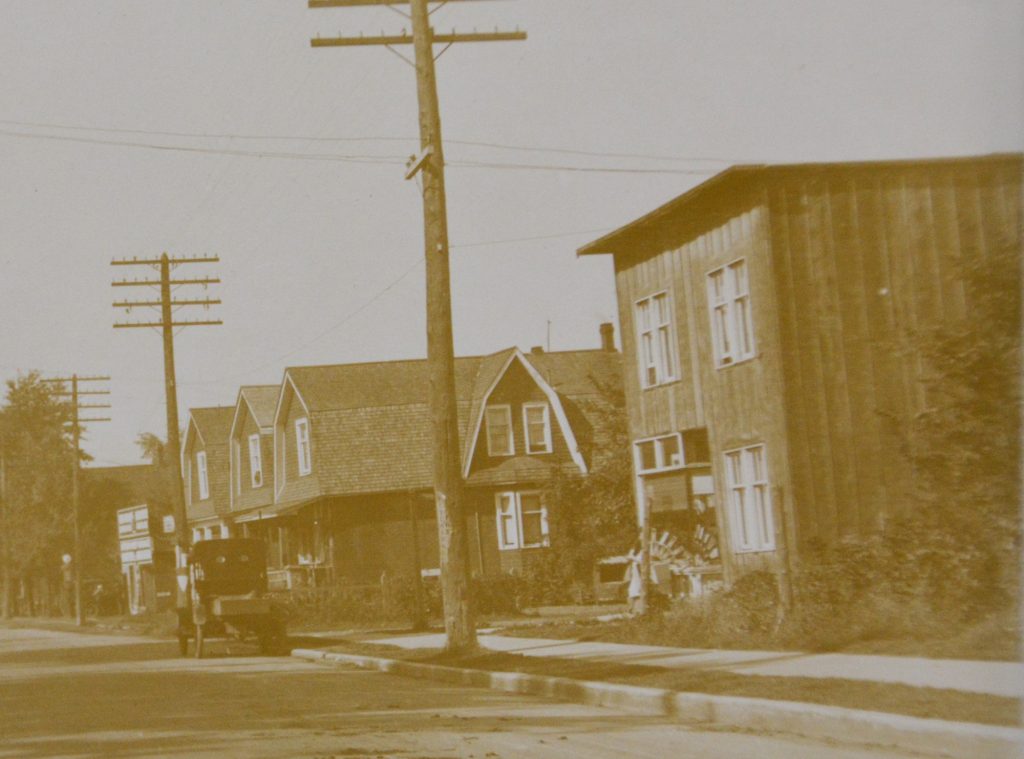
Christmas Day 1924 was also the last day you could build in a large swath of Kitchissippi without a building permit. Boxing Day would see a new bylaw passed for the Police Village of Ottawa West (covering Champlain Park, the west part of Wellington Village and most of Hampton-Iona) which established 15-foot setbacks, a certain class of house, and no wood houses in the neighbourhoods south of Scott Street. Ottawa West was only the second community in Ontario to take advantage of a new provincial Act allowing villages abutting an urban municipality to do so.
An added excitement on Christmas Day was, for the first time ever, residents could hear a live Christmas broadcast originating from Ottawa. Dubbed the “strongest radio station in the world,” CNRO was the first station established by CN Railways earlier in 1924 as part of a national series of stations. At 7:30 p.m. the station came on the air with a “Santa Clause talk to the children” program, followed by live concerts originating at both the Chateau Laurier and Dominion Methodist Church, featuring the Chateau Laurier Orchestra and Dominion Church choir. A midnight mass delivered by Rev. Ernest E. Sayles delivered “A Message of Goodwill.”
As The Journal wrote on Christmas Eve 2024, “This Christmas is by far the happiest that the world has known since the war. There is a feeling that things are slowly righting themselves, and that we can surrender ourselves to the mellow influences of the season with some confidence that our worst troubles are over. Let us, therefore, in the true spirit of Christmas, lend a hand wherever we can – and be merry.”
